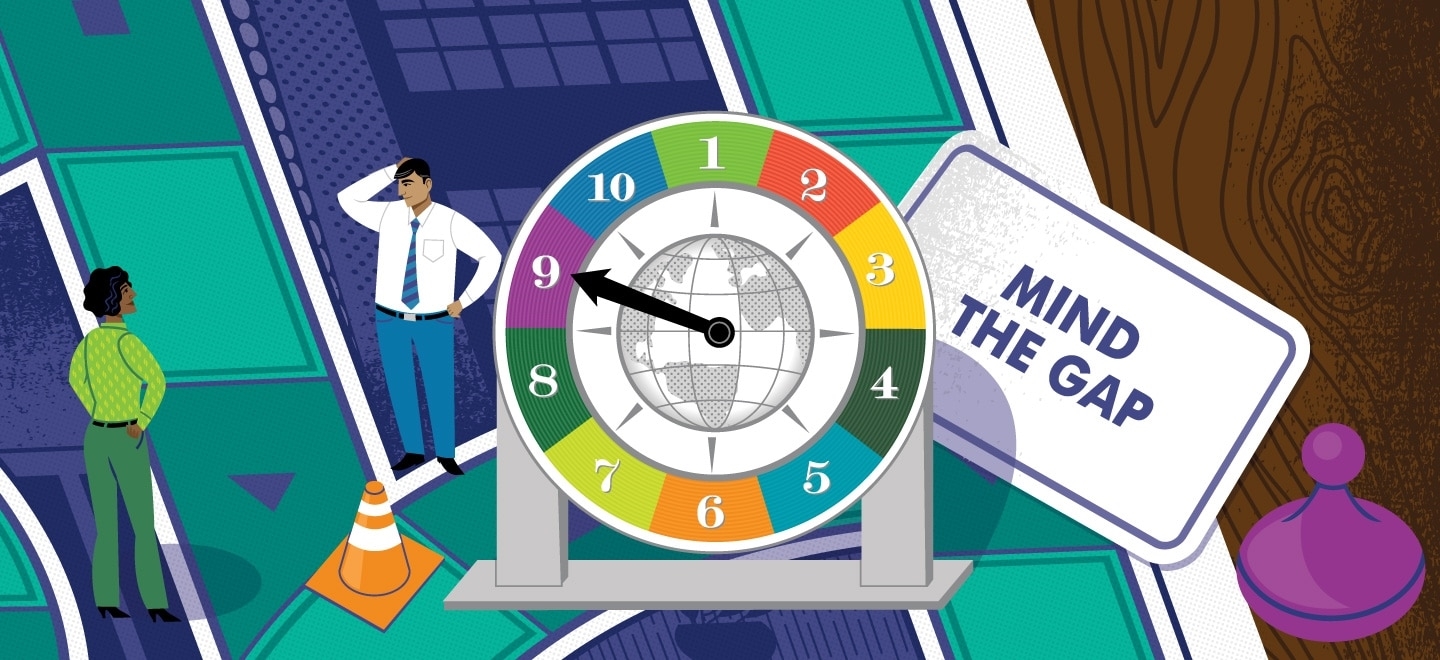11 Ways to Create Psychological Safety at Work
In 2018, nearly one in five adults experienced some form of mental illness. In 2020, it grew worse—an emotional well-being survey showed 90 percent of U.S. adults experienced pandemic-related emotional distress. According to the World Health Organization, depression and anxiety cost the world’s economy an estimated $ 1 trillion per year in lost productivity. Today, psychological safety at work is more important than ever.
Sadly, only 39 percent of participants feel that their employer understands them as well as they’re expected to understand their customers. This leads to tremendous disengagement. Gallup reports that less than one-third of the U.S. workforce is engaged in their jobs. Worse, that number plummets to a mere 13 percent on a worldwide level. Lack of engagement is forcing organizations to concentrate on upgrading the employee experience.
Psychological safety should be the foundation of an exceptional employee experience. Keep in mind that employee well-being extends past the 9 to 5. Enhancing psychological safety means that your business helps your employees stay healthy?mentally, physically, and emotionally?by activating employee engagement every day.
What is psychological safety and why is it important?
According to Harvard Business School professor, Amy Edmondson, psychological safety is ‘‘a sense of confidence that the team will not embarrass, reject, or punish someone for speaking up. It describes a team climate characterized by interpersonal trust and mutual respect in which people are comfortable being themselves.” Oftentimes, people feel too scared to speak up at work for fear of failure or disrespect. This can feel extremely limiting and causes employees to become uninspired and unmotivated.
Conversely, employees at companies that emphasize psychological safety are far more engaged. Google found that teams with high rates of psychological safety implemented more diverse ideas and drove higher performance. Not only that, those employees were more likely to stay with the company. In fact, HR influencer, Brené Brown, cites psychological safety as the number one factor in high-performing teams.
Get to know your employees on a human level. Taking the time to do this will help uncover the best way to empower them and create an environment that makes them feel safe. Establishing psychological safety at work is a win-win: employees who feel more comfortable being themselves produce better results for your company. Also, by investing in a positive employee experience, organizations are four times as likely to retain top performers, two times more likely to have employees achieve first-year performance goals, and two times more likely to hit revenue goals. Now, more than ever, is the time to put psychological safety at the top of your company’s priority list.

How to create psychological safety at work
Developing a culture of psychological safety at work is paramount to your business’s success. So, what are the steps to get there? Here are 12 ways to start creating a safe and prosperous workplace for every employee.
1. Meet each other’s needs
When interacting with your team members, be conscious of their preferences. Too often, managers make decisions without consulting their direct reports. Figure out what your employees want in terms of communication style, one-on-one meeting frequency, and feedback. Show that you care by asking what they need and actually taking action based on what they share.
Keep in mind that asking for input once is not enough. Follow up to ensure employee needs are constantly being met. Employee needs may change, depending on what they’re working on at the moment. Although it seems relatively easy to check in with your employees and create a more positive work experience, a live Aptitude Research webinar poll showed that 50 percent of respondents’ organizations don’t have a strategy in place to improve the employee experience. Worse, 10 percent of companies said they don’t have plans to improve the employee experience at all.
Willis Towers Watson found that employees look for a meaningful and personal connection with their employer. In their study, only 39 percent of respondents in the study felt understood in the workplace. Take the time to discover what motivates and creates a safe space for each of your employees. This can include receiving acknowledgement for hard work, sharing their voice in meetings, or getting professional growth opportunities?there’s no one-size-fits-all.
2. Have two-way dialogue
In order to establish psychological safety, The New York Times recommends that “people take turns during a conversation and to listen to one another more.” Leaders must listen to employee feedback and vice versa. In fact, 60 percent of staffers want feedback on a daily or weekly basis. For employees under 30, this percentage jumps to 72 percent.
Having two-way dialogue is very valuable in a company’s ability to succeed. Encourage a collaborative approach to feedback rather than a one-way street. Keep in mind that employers can’t ask for employee feedback without taking proper action on results. Without action, employees won’t feel as though they’re heard or motivated to communicate how they’re feeling. Support the value of openly discussing results and building action plans together.
Did you know only 11 percent of employers survey employees more than once a year? According to Gartner, “most organizations (74 percent) will still use formal, large-scale surveys to gauge how employees feel about their jobs and workplace, but that is down from 89 percent in 2015 — and an increasing number use other forms of engagement data as well or instead.” Sixty-four percent of organizations actually use small-scale pulse surveys and one-off, topic-specific surveys to measure engagement. Annual surveys simply aren’t enough—when you hear from employees so infrequently, it’s hard to act on their feedback. Not only that, the survey results can lose its impact and relevance if not acted upon immediately. The longer managers wait to respond, the more dissatisfied employees will become. Hold managers accountable to follow up on feedback quickly to ensure they’re continuously facilitating two-way dialogue with their team.
When employees don’t feel heard, they become disengaged and no longer share feedback—this can lead to the death of an employee engagement program. In fact, more than 1 in 5 employees say their manager/company is “horrible” and never acts on feedback. This hurts psychological safety and engagement levels in the workplace. It also allows problems to go unreported and potentially grow bigger, creating a vicious cycle for a negative work environment. By contrast, 90 percent of workers said they’re more likely to stay at a company that takes and acts on feedback.
Pulse surveys throughout the year—in addition to annual surveys—help give employers more real-time feedback and help employees feel that their voice is important. Additionally, pulse surveys aid in combating recency bias. Recency bias is when recent events are given more importance over those that happened longer ago. With annual surveys, employee responses focus on what’s happened recently rather than the whole picture of the past 12 months. This can translate into oversights that then become bigger problems down the road.
3. Establish and build trust
Having a team climate with mutual respect and trust—and without blame—helps employees and managers to be themselves. However, just 21 percent of HR and engagement leaders agree or strongly agree that their employees deeply trust company leaders. In order to improve psychological safety at work, you need to strengthen employee trust.
Trust is an essential component of a healthy employee-manager relationship, directly impacting manager performance ratings. Employees who trust their manager are more committed and productive and communicate better. Building a strong workplace culture rooted in trust and community is more important than ever.
Luckily, a Young Presidents Organization survey of chief executives found that 42 percent of CEOs say the importance they place on building trust has increased in the past five years. Establishing trust requires a combination of factors: integrity, authenticity, and empathy. By increasing employee autonomy and reducing hierarchical structures, organizations show—not just tell—employees that they’re trusted.
4. Focus on coaching
A fantastic way to build psychological safety at work and foster engagement is through coaching. Millennials, in particular, respond well to the high-touch guidance of a coaching culture. According to Harvard Business Review, millennials want feedback 50 percent more often than older employees. Most of them actually preferred feedback on a weekly or monthly basis.
Managers should dedicate time to mentoring and connecting with their direct reports. Urge leadership to listen when they meet with employees and to provide their team members with opportunities that reflect their goals. Implementing a coaching approach nurtures a more collaborative environment and empowers employees. In the long run, this kind of workplace leads to increased employee performance and company loyalty.

5. Promote a growth mindset
Every employee—including those at the highest levels of leadership—can always learn something new. Promoting a growth mindset in your workplace can convince your employees they can expand their abilities, EQ, and outcomes, in general.
A growth mindset sees learning opportunities, not failures, which inspires employees to take risks. If employees and managers feel comfortable sharing incomplete work or unsuccessful projects, everyone can learn and be inspired through further development together. In a trusting and open team, employees can be vulnerable without the fear of backlash. This is key given psychological safety is all about ensuring employees feel safe and comfortable to share anything – both wins and areas to improve.
As a result of a growth mindset, employees will be more open to tougher assignments, ask peers for help, and work more diligently to solve problems. In a growth mindset environment, employees are 47 percent more likely to perceive colleagues as trustworthy; this can lead to a more supportive team environment.
6. Encourage innovation
A growth mindset should naturally influence innovative thinking. This means that your organization should encourage employees and managers to bring radical ideas to the table. Make sure that everyone also feels welcome to respectfully challenge each other’s ideas. Everyone should feel safe to share ideas, no matter how ridiculous they may seem.
It’s easy to see the value in this type of thinking—it pushes the envelope and causes employees to think outside the box. With this framework, company employees are 65 percent more likely to say that the company supports risk-taking.
7. Show frequent appreciation
Organizations need to actively support an inclusive environment to ensure psychological safety. A culture of recognition encourages inclusivity by making employees feel appreciated and connected. People value recognition, from both managers and peers, that is personal, genuine, and meaningful. Did you know just one-third of organizations are training employees in how, when, and why to recognize their peers? Train managers and employees on the value of recognition, how to give it, and how to use your recognition program.
Recognition costs very little, and there are major consequences to not taking it seriously. Two-thirds of employees who haven’t received recognition in the last seven days are twice as likely to say they would leave the company as other workers. Plus, employee engagement is directly tied to recognition. Brandon Hall Group reports that organizations that rate their culture of recognition highly are 2.5x more likely to see increased employee engagement. Those that give frequent recognition are 34 percent more likely to see an uptick in engagement.
Employees want to feel valued and appreciated on a regular basis. Ninety-three percent of employees want to be recognized quarterly, if not more frequently. The best way to guarantee that employees are getting recognized regularly is to leverage an engaging employee recognition platform. Most platforms have integrations with other popular HR software, such as Workday, making it easy to integrate recognition into your workforce’s everyday work flow. Furthermore, recognition software makes it easy for employees to send and receive words of appreciation to another in real-time. Create a sense of community and remind employees that they’re supported daily by displaying all recognitions on a company-wide newsfeed.

8. Squash negativity
Negativity can be just as contagious as recognition or positivity. Team members who work with someone who bad mouths others may worry the person will do the same to them. Or, team members may interpret negative behavior as an acceptable way to vent. Over time, negativity can erode psychological safety at work, so nip it in the bud.
If a member of your team speaks negatively, talk to them about it. The negativity could stem from a poor way of communicating a roadblock or a personal problem the employee faces at home. Attempt to resolve the problem by jointly creating a path forward, focusing on actionable and constructive comments.
Communicating with disgruntled employees shows that you care about their psychological safety and well-being. It also portrays your concern for others who are impacted by the negativity. When speaking to a negative employee, be careful not to jump to conclusions, assume that the person is an “issue”, or try to figure out who to blame. Doing so can produce a host of defensive reactions, resulting in rejection of the feedback and subsequent lack of performance.
9. Show empathy
According to a LinkedIn Global Trends Report, 92 percent of leaders say soft skills matter as much or more than hard skills, and 80 percent view soft skills as increasingly important to company success. Empathy is touted as one of the most vital soft skills, but it’s seldom used in the workplace. Putting yourself in someone else’s shoes takes a little more time and effort, but it pays off in spades.
First, try summarizing what you heard. It shows the speaker that you want to understand and get it right. Next, be aware of your facial expression and body language—you don’t want to come across as bored or tired, mistakenly indicating that the speaker isn’t being well-received. Nod to acknowledge that you hear the speaker, and occasionally lean forward to show engagement.
Lastly, thank people for their ideas and thoughtful feedback. Remember that when employees show empathy toward each other, they’ll be more likely to continue collaborating in the future.

10. Include teams in decision-making
Collaborate with your team when making decisions. With more team input and feedback, you’re much more likely to produce better outcomes. A great way to involve everyone is to gather continuous feedback and review it as a team to build collaborative action plans together.
Leaders can then schedule team discussion sessions where employees can work together on a plan to address problems. This guarantees that all voices are heard and helps employees feel like they belong. Having your team contribute to solutions facilitates a more inclusive environment?a major company advantage. According to Deloitte, diverse and inclusive teams outperform their peers, generating up to 30 percent higher revenue per employee and greater profitability than their competitors. Without a strong culture of inclusion and flexibility, the team-centric model is likely to perform poorly.
Moreover, team decision-making increases transparency, an integral part of a safe culture. Poor internal communication can negatively impact an organization’s performance. Research finds that poor internal communication relates directly to an organizational crisis. The Asian Journal of Public Relations shows that transparent employee communication improves how employees view their company and increases engagement. In order to develop a safe, transparent space, companies must make sure that information is sufficient and accessible.
11. Empower managers
Gallup’s data reveals that only three out of 10 U.S. workers strongly agree that their opinions count at work. In organizations where 6 out of 10 workers feel their opinions count, there’s a 27 percent reduction in turnover, a 40 percent reduction in safety incidents, and 12 percent increase in productivity. Evidently, individuals who feel respected and heard have a huge effect on the organization as a whole.
To permeate psychological safety at work, companies need to teach managers how to strengthen team engagement. Managers should learn how to create an environment where their team feels comfortable asking for clarification and brainstorming ideas together without judgment. Each team member needs to believe that his or her suggestions, comments, and questions are perceived as valuable. Empower managers by equipping them with pulse surveys or anonymous feedback tools that can help them quickly identify and address any problems. Likewise, team members will feel safer knowing that their perspectives are being considered.
Enhance your culture with psychological safety
Top performers look for companies that promote employee growth and provide an unbeatable employee experience. Companies with a culture of psychological safety will improve your workplace—including building trust and a sense of connection and belonging, as well as improving mental, psychical, and emotional well-being. Given the current times, focusing on employee psychological safety is more important now than ever.
Business & Finance Articles on Business 2 Community
(83)


